The largest of all orders of insects is Coleoptera – which includes the insect colloquially known as the beetle. This order includes more than 300,000 distinct species. Although most species of beetles are beneficial in various ways, some can be a nuisance when they get in your home. A few species of beetles can even cause damage to your home or belongings and action may be needed to protect what's yours.
In this article, we'll share with you facts and information about beetles, different types of beetles, as well as warning signs that these insects may have made their way into your home. Here are some of the common questions we get asked about beetles that we'll answer for you here:
- What do beatles look like?
- What are the differences between bugs and beetles?
- Beetle reproduction and life cycle
- Common types of beetles
- Beetle habitats and behaviors
- What do beetles eat?
- What eats beetles?
- Do beetles have wings and fly?
- Are beetles decomposers?
- Do beetles hibernate
- Are beetles seasonal?
- Are beetles harmful to humans or pets?
- Do beetles sting or bite?
- What problems do beetles cause?
- What attracts beetles in your house?
- How can I prevent beetles from getting into my home?
- What are signs of a beetle infestation?
- How do I get rid of beetles in my home and yard?
What do beetles look like?
The order name Coleoptera means "folded wing" and it's a good description of these insects. All beetles have a hardened outer shell covering their wings, known as an “elytra." Identifying beetles can be tricky, since they come in an array of colors, shapes, and sizes. However, all beetles have six legs, a head, a thorax, and abdomen. Their elytra are located on their thorax. Beetles also have antennae and a mandible that they use for crushing food and fending off predators.
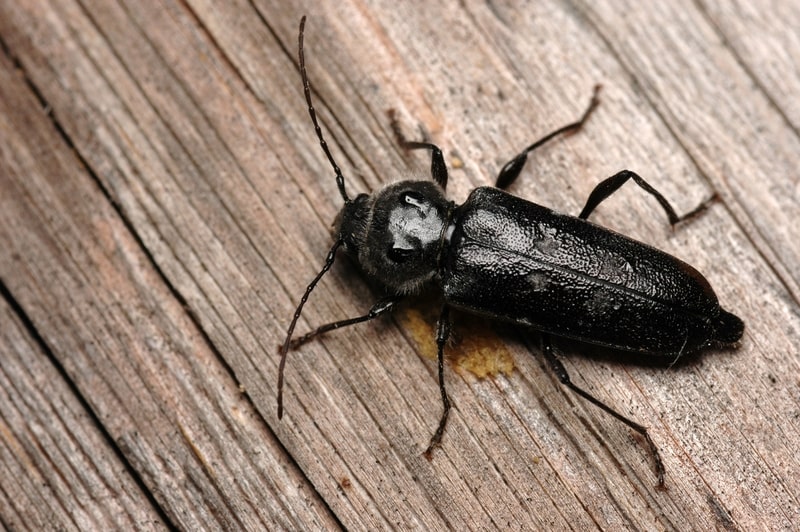
What are the differences between bugs and beetles?
Beetles have an outer pair of wings that harden to form a protective shield over their delicate flight wings. In addition, beetles have mouthparts that are designed to chew. Bugs, by contrast, have mouthparts meant for piercing and sucking.
Many people commonly use the terms “insects" and “bugs" interchangeably, although the terms aren't necessarily the same thing. Similarly, some people may refer to “beetles" as “bugs," when they are actually a type of insect. It all comes down to the fact that beetles have a different type of body than a bug.
Beetle reproduction and life cycle
Like other insects, the life cycle of a beetle plays out in stages. This process, called metamorphosis, completely transforms the beetle egg to a fully-formed adult beetle. There are four stages of a beetle's development.
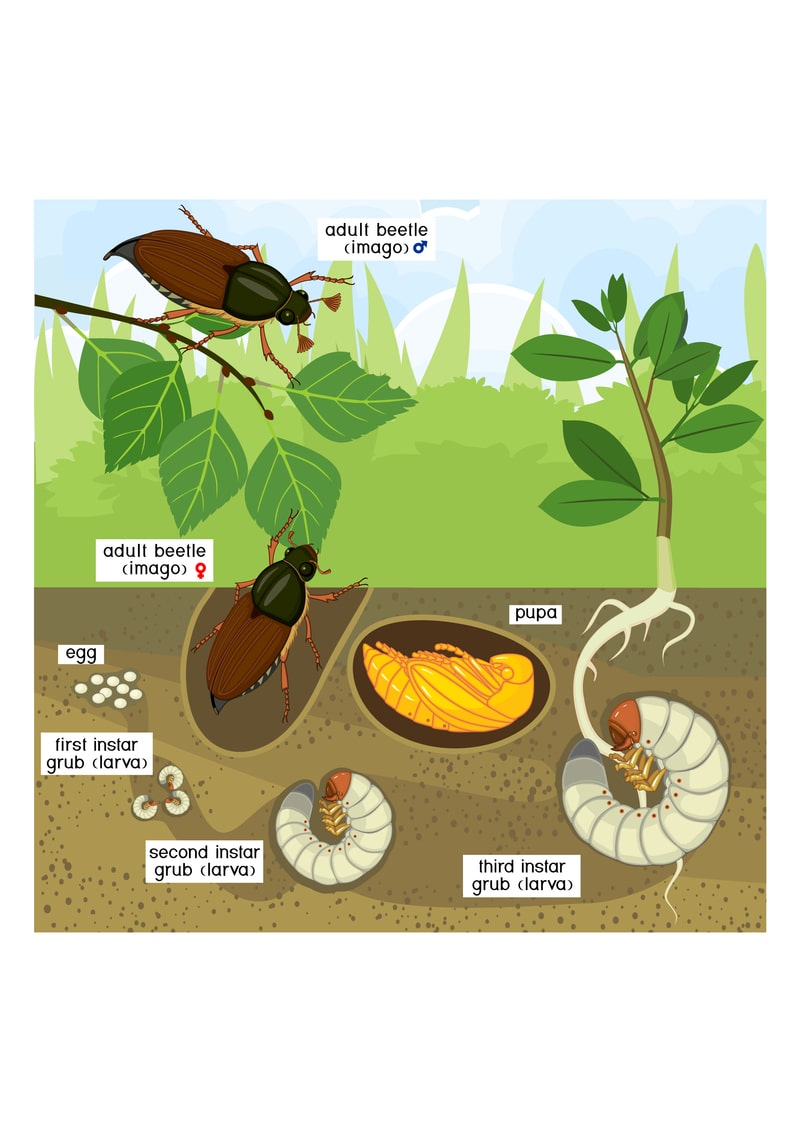
Eggs
Many adult beetles lay their eggs in rotting vegetation, decomposing wood, or animal feces, where they leave to develop into the next stage. For many species of beetles, this is where their life begins as small white or yellow eggs.
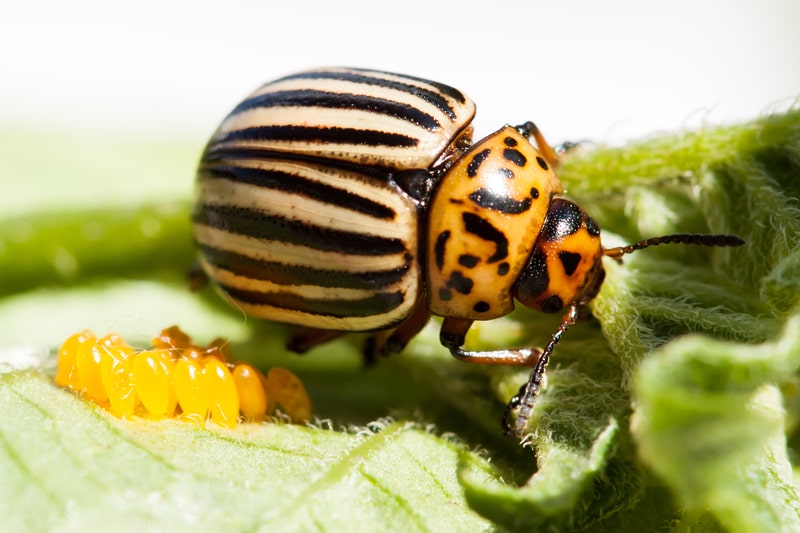
Larva
After an incubation period of between 7 to 10 days, beetle eggs hatch and a grub-like larva emerges. Beetles exist in this larval stage for roughly three months. The larvae may molt, or shed its skin, up to as many as ten times as it grows and prepares for its most dramatic transformation yet.
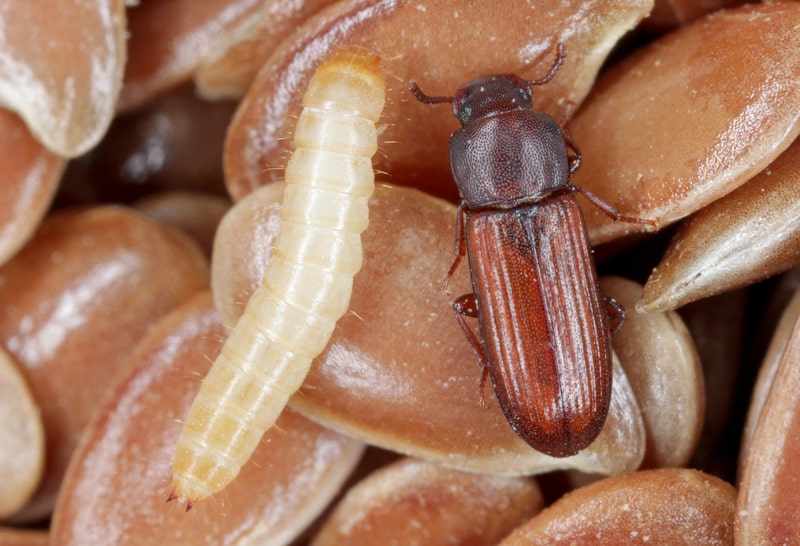
Pupa
When the larva enters the pupal stage, it spins a cocoon around itself. This protective case will be home to the beetle as it transitions into an adult. This stage can last for months, or even years, depending upon the species of beetle.
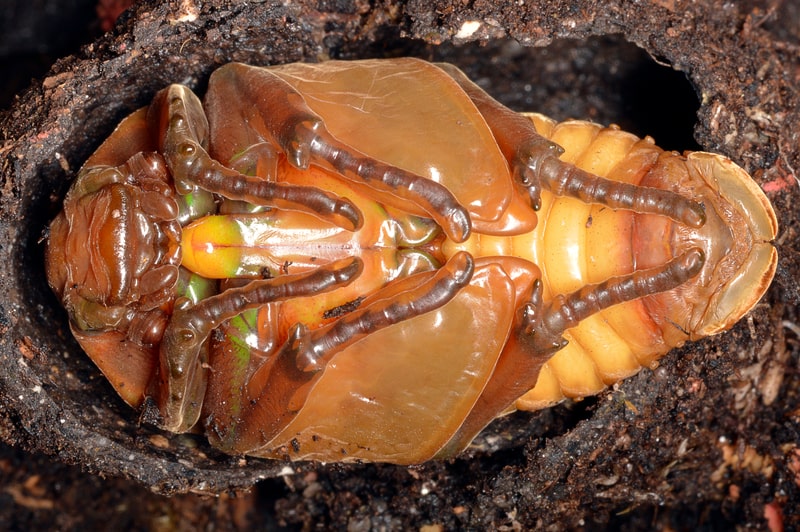
Adult
At the end of the pupal stage, a full-grown, adult beetle emerges and is ready to mate, reproduce, and begin the lifecycle of the next generation of beetles.
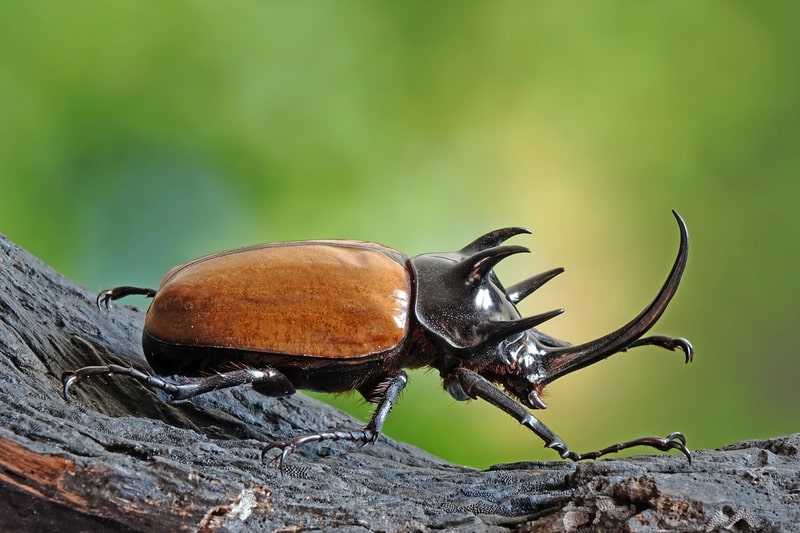
Common types of beetles
There are more than 300,000 known species of beetles throughout the world. In North America alone, there are over 30,000 species of beetles, each with their own unique characteristics.
For instance, the American spider beetle, with its gold to reddish-brown coloring, tends to stay outdoors. Yet, when they make their way into your home, they will feed on not just dry goods like flour, but will even eat leather. Like most beetle species, it is the larval stage that does most, if not all, of the feeding and causes the resulting damage to materials in homes. Adult beetles usually lay eggs near or in a suitable food source that their larvae can use for survival.
Another more common beetle found throughout the U.S. is the carpet beetle, which poses no danger to humans but can be destructive when it comes to clothing and anything containing natural fibers like wool, cashmere, and cotton. Carpet beetle larvae are voracious eaters and will wreak havoc on your belongings in their need to feed.
Another type of beetle that often makes its way indoors is the larder beetle, which looks for a food source where they can lay their eggs. Larder beetles will seek out dead insects or animals to feed on, as well as fresh food such as meats, cheese, and other sources of protein. These hearty eaters are also used by museum curators to clean the bones of animal skeletons, giving them free rein to chow down on any remaining flesh.
